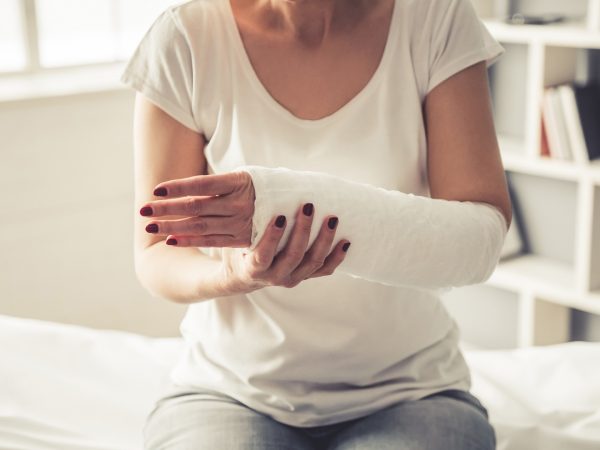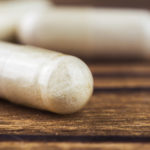Can Supplements Help Heal Broken Bones?
I fractured my arm. Is there anything I can do speed healing?
Andrew Weil, M.D. | July 16, 2021

Broken bones typically occur as the result of a fall or other accident. You can break — or, more accurately, “crack” or fracture — a bone from a high-force impact, as well as from repeated low impact stress or strain. Some people are at higher risk for fractures, especially older people, who lose more bone density with age and who are more prone to falling. People with osteoporosis or certain bone infections or tumors, as well as athletes, are also at increased risk.
The best course of action when you experience a fracture is to seek medical care as soon as possible. A doctor can confirm the break, determine the type of fracture, and provide you with a cast, brace, or other treatment to ensure that the break heals properly.
Some practitioners may also offer electrical bone stimulation for fractures that have failed to heal on their own (“non-unions”). In this noninvasive approach, a device that generates ultrasonic or pulsed electromagnetic waves is applied to the skin over the affected bone for 20 minutes or more daily. The purpose of electrical bone stimulation is to trigger bone regeneration and enhance healing. Some people have had good results from this technique, and studies suggest that it may help reduce pain as bones mend. However, evidence to support the use of electrical bone stimulation to improve the final outcomes in bone healing is mixed.
That said, there are things you can do at home to help promote and even possibly speed the healing process. I recommend trying a homeopathic remedy called Symphytum. (Use the 30C potency, one pill once a day for a week; then the 200C potency, one pill a day for another week.) Derived from the comfrey plant (Symphytum officinale), it gets its name from Greek roots meaning “to knit together.” Comfrey has a long history of use and still enjoys a reputation as a healing plant that may help mend broken bones. Research in lab animals suggests that Symphytum shows promise for bone regeneration.
Note: Comfrey is toxic when ingested. It contains pyrrolizidine alkaloids, compounds that are particularly harmful to the liver. However, the extremely low potency and dilution of homeopathic Symphytum renders that remedy safe. You might also try applying a poultice of comfrey root to the skin over your broken bone. When used topically, comfrey has excellent wound-healing properties and systemic absorption of pyrrolizidine alkaloids by this route is minimal. Grind the root of the plant (available from herb suppliers) into a powder and mix with water or aloe vera gel. Pack it onto the affected area and cover with a bandage.
Andrew Weil, M.D.
Source:
Bahere Saheli, et al. “Symphytum Species: A Comprehensive Review on Chemical Composition, Food Applications and Phytopharmacology,” Molecules, June 2019; 24(12): 2272.









